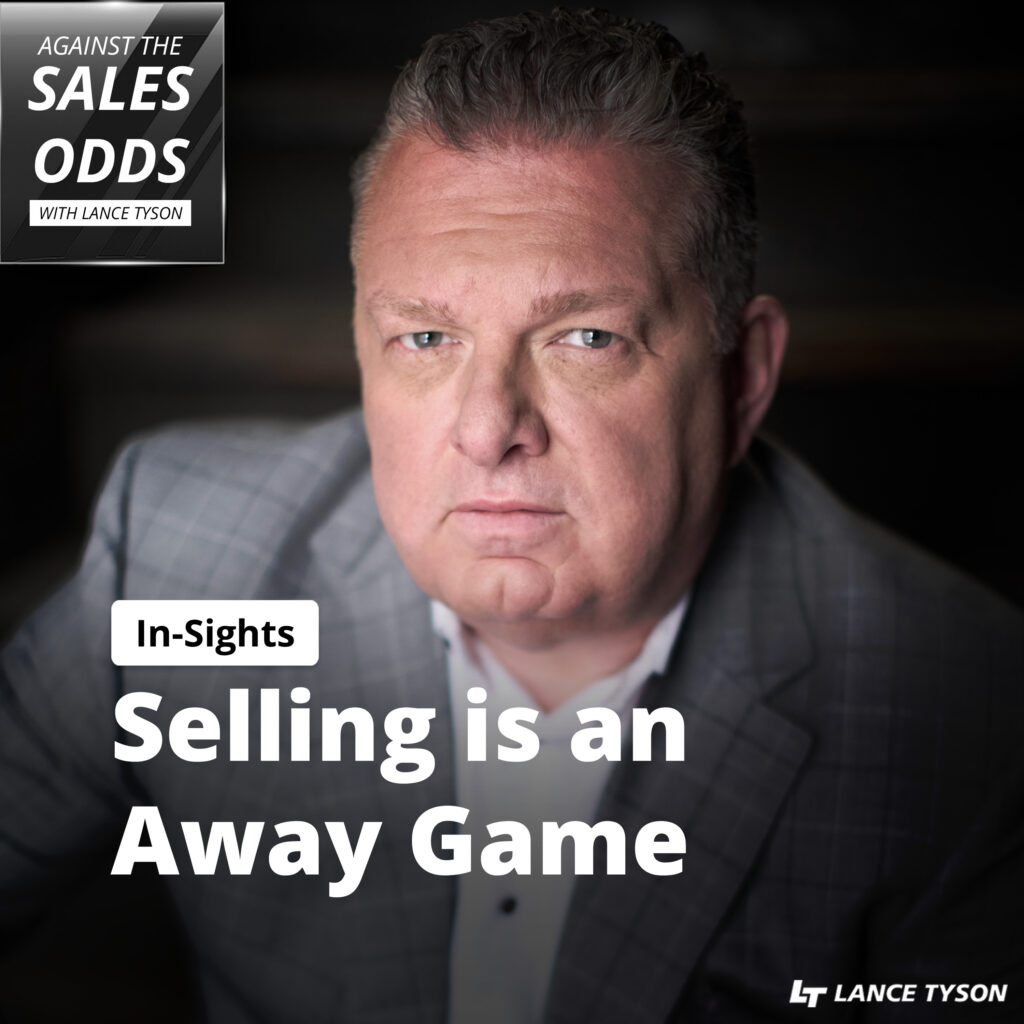In this short episode of In-Sights, Lance dives deep into the strategies and tactics that can help you effectively reach and engage C-suite executives. Whether you’re a salesperson aiming to pitch your product, a business leader seeking valuable partnerships, or a professional looking to expand your network, understanding how to connect with top-tier decision-makers is crucial. We’ll cover proven techniques to get your foot in the door, ways to craft compelling messages, and tips to build lasting relationships with executives at the highest level. Tune in to learn how you can elevate your approach and successfully engage with the C-suite.
Lance is the bestselling author of Selling Is An Away Game and The Human Sales Factor.
You can purchase these books at: https://www.tysongroup.com/books
Be sure to sign up for Lance’s LinkedIn newsletter here: https://www.linkedin.com/build-relation/newsletter-follow?entityUrn=7123326552678805504
Love the show? Subscribe, rate, review, and share! https://www.tysongroup.com/podcast
—
Listen to the episode here
In-Sights: Winning Over The C-Suite: Tactics For Success
Commitment To Prospecting Strategy
To sum this piece up, I would say that, number 1) You don’t want to be reinventing how you do prospect. Reinventing it each week or just doing it whenever you have time because if you don’t commit some time to it, I think you’re going to have a failure, you’re not going to get the volume you need. Number 2) Picking sometimes when you’re going to block doing certain things, as Alicia was saying, like the research, or like Sean was saying, this is when you’re emailing, it’s when you’re going to make a call.
If you don’t commit some time, you’re going to have failure.
There are some things to be said about linear copiers. Their motto has been for 50 years, five calls after 05:00. They banked their whole success ratio on getting decision-makers after 05:00. They learned it’s called five after five. Getting decision-makers at their desk before 08:00 is a thing. Their people will answer their phones.
Frequency
A lot of high-level decision-makers are there. That’s why I started by saying that the average or the most likely time somebody has an outbound sales call is 10:00 AM. You’ve got to beat the street at some level. You have to beat what the trend is. Then the big thing is frequency. Think about it this way, since COVID, one thing to note is most corporate phones now go out to people’s cell phones. Two, nobody can get a handle on what the ratio is people working in the office versus out.
You can’t compare it against what you guys are doing. There are these hybrid moves. There was a report the other day, I think I saw it on Bloomberg where, pre-pandemic cell phone use in New York City was X and now post-pandemic, it’s Y, it’s like half of that. That means in downtown areas like during the week, there aren’t as many people in their offices as they were before.
Little Hacks
You just don’t know where they’re working from. You have to attack in a way that your message is frequent enough. There are a couple of little hacks that work. I was just doing it to a decision-maker the other day. For instance, that frequency also ties into how you send the message out, email, social, or text.
You have a lot of people’s cell phones that you don’t even realize you have because their phones have been forwarded and when they call you back, they might be calling from their cell phone because it’s been forwarded off the office. For instance, does everybody here have an iPhone? I can send Sean a voice note specifically to iPhone.
If you go on your iPhone right now and put like Sean’s number in, there’s a squiggly blue line right next to that little monkey’s face there? If I send him, this is called a voice note. I can say, “Sean, this is Lance. I’m on a Zoom call with you right now.” I’m going to send this to you right now, Sean. You just got it. Look on your iPhone. Do you have your phone with you? Is there a little message there?
Yes, an audio message.
There’s an audio message on his text. As soon as he plays the whole thing, it disappears on my phone, then I know that he listened to the message.
I learned something new today.
There’s a little hack there.
What if you’re going to somebody who has a Samsung phone?
Good question. 90% of the population has iPhones, so it works 90% of the time.
I would disagree with that. My husband works for Samsung.
Whatever their numbers are, it’s probably do you have an iPhone though?
I don’t, I use a Samsung.
There you go. It doesn’t work with those. Like anything else, there’s a percentage. The bottom line is I couldn’t get Al Guido, the CEO of Elevate on the phone the other day and I was thinking, “Dude, pick up.” I left a message, I texted him, and I sent him this and I knew he listened to it because it disappeared. I said, “Dude, you know that I know you listen to the message because it disappeared on my end.”
Referrals And Challenges
Then he wrote back, he said, “Are you serious?” I said, “Now I got you. Here’s my question.” There are all kinds of little hacks you can do. They’re all touchpoints, at the end of the day, you have to just think out because the touchpoints odds odds-wise, you need 9 to 12. That’s to the lowest common denominator. I’m not attributing to, how well some of you can deliver a message, or how well you can write.
You just have to think outside the box.
I’m just saying if it’s just a very common boring message, you need about 9 to 12. Some of you might be able to beat that with your personality or your messaging being really good but we can’t argue the fact that you need X amount of touch points to get in touch with somebody. That means you’re going to need the time once you target an organization, you need to go after three people minimum, and you need a certain amount of touch points. You’re going to need the time and effort to put the labor in.
The only thing you can do to beat that is get referrals. The only problem with referrals is this, they’re just unpredictable. Most salespeople don’t get referrals because they don’t ask and some people aren’t comfortable giving them. Other than that, you’re going to be challenged from a KPI standpoint, when you’re keeping forward indicators to identify the organizations we should be doing business with.

C-Suite Engagement: The only thing you can do to reduce your time and effort is to get referrals, but remember, referrals are just unpredictable.
Putting in the effort to get their attention and try and win time off their calendar. You’ve got to sell them on the idea of meeting with you. Then the third thing with that, the other reason why you have to get in touch with so many of these brands is that you don’t want to be going after one brand in one category and then not being able to sell them and not be able to leverage the fact that you may have another opportunity. It’s in your best interest to go after at least two. That would be part of that negotiation strategy.




